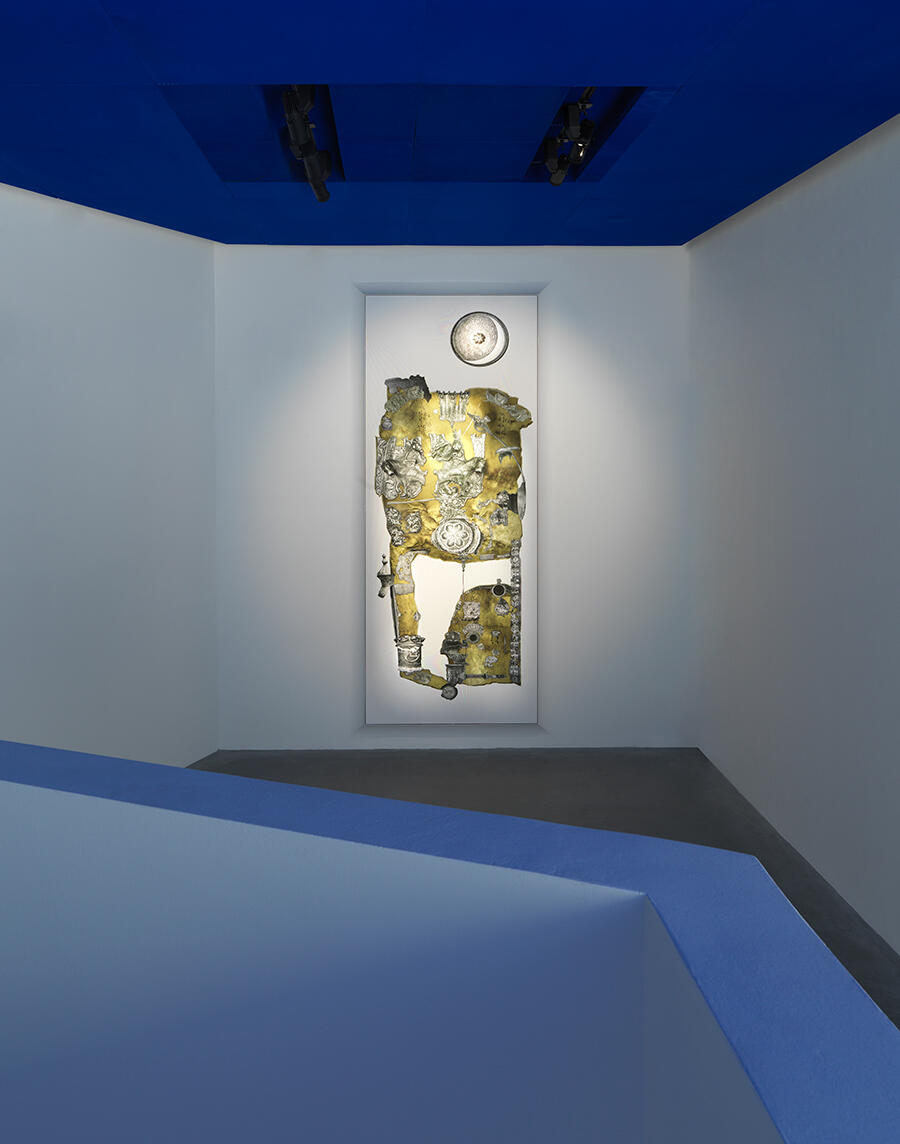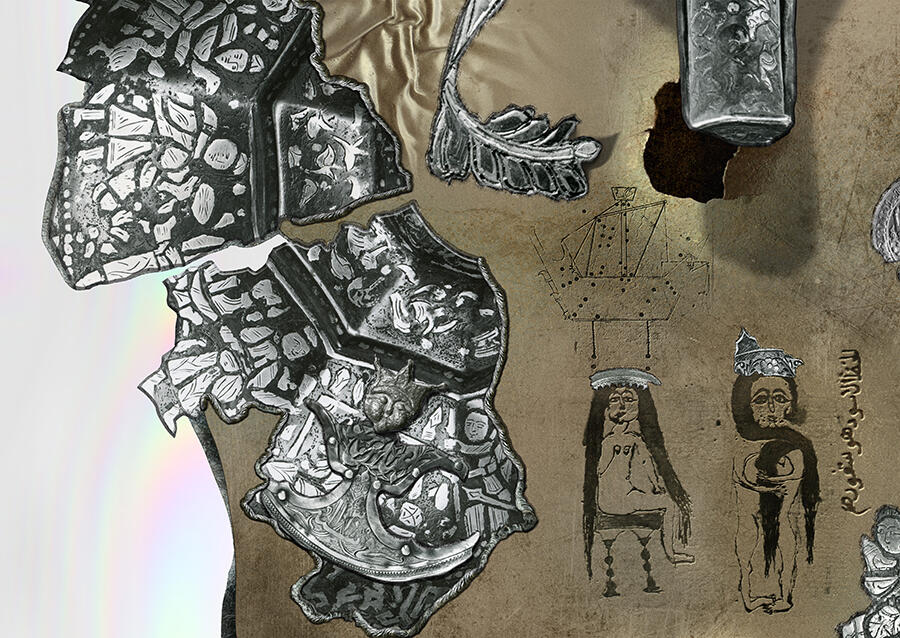Ilit Azoulay’s ‘Queendom’ Reconstructs the Past
The artist speaks to Boaz Levin about her latest project for the Israeli Pavilion at the 59th Venice Biennale
The artist speaks to Boaz Levin about her latest project for the Israeli Pavilion at the 59th Venice Biennale

Boaz Levin: Your exhibition at the Venice Biennale is titled ‘Queendom’ – Malkut in Hebrew, ملكوت in Arabic. Can you talk about the origin and meaning of this title?
Ilit Azoulay: Queendom, but also the neologisms Malkut (מלכוּת) and ملكوت, describe a different kind of power structure, an alternative to the more familiar kingdom. The project proposes new ways of passing on information and generating histories and stories. Queendom offers a non-patriarchal and non-territorial vision that transforms the pavilion into a place where art takes on power.

BL: What was the project’s starting point?
IA: My work is research-based. The project started from the archive of David Storm Rice, an art historian and archaeologist who specialized in Islamic art. Over time, Rice fell into obscurity, and his archive was nearly forgotten. It was quite literally about to be thrown out into the trash.
It consists of around 10,000 items, mainly macro photographs of Islamic inlaid metalwork objects of the kind that were widely traded during medieval times, often arriving in Europe through Venice. Rice was obsessed with these vessels and photographed each object from every possible angle using a macro lens, almost as if he were using a 3D scanner. But most of his research never came to fruition; he died in his late 40s. It’s like he had 10,000 different open tabs in his browser.
I tried to understand the archive materials and the way Rice looked at the objects from the perspective of a Western researcher. As there is little biographical information about him and my focus is primarily visual, I was quite interested in his actual gaze: his method of scanning the photographs. What kind of data did he try to unearth through this research?

BL: That’s quite different from your previous projects, such as your exhibition ‘No Things Die’ (2017), which explored the Israel Museum’s collection through interviews with its curators, conservators and archivists.
IA: Yes, normally I start by creating a sort of oral history, interviewing people and gradually assembling an archive. Whereas here there weren’t any people to interview. In building an archive out of an archive, I had to start to imagine things immediately. But in the end, my method of photographic scrutiny – how I extract information from objects – stayed the same.
I’m not sure how happy Rice would be if he saw what I did with his archive, but I am not a researcher, I’m an artist. We are searching for different insights. Maybe I appropriated his archive, its information, just as he had worked with a culture that wasn’t his? I think of a conversation I had with Kader Attia, who is quite critical of the notion of cultural appropriation. He said that for him, it’s more like people leave behind a thread for others to grasp, and that’s what makes history. For me, Rice left a thread and I just picked it up, though pulling it in a different direction.

So, I took this archive that was photographed from Rice’s perspective and reshaped it digitally into my own archive. I ‘broke’ his macro photographs into even smaller pieces. Already the original vessels were containers of information. They were often made on the orders of powerful people. I changed their codes, their genders. Princes became princesses. Kings became queens.
BL: What did this technical process look like? How did you manipulate these photographs?
IA: I really felt for the first time like I was practicing a craft. I used the photo-montage technique in a similar way to how the makers of these objects might have used inlaid metalwork. I read in a couple of articles that women likely played a role in producing these objects. But we will actually never know. They weren’t acknowledged, their names were never mentioned. That’s what led me, through Rice’s gaze, to trace the hands that worked on the objects by re-enacting them digitally. It was also a way to consider the female labour involved in the making of these vessels, which has long been obscured.
BL: Adding to that thread.

IA: Yes, in a way I continued to merge information through craftwork, but this time in the digital space. I photographed different metal-based surfaces using a macro lens – the metal surface, the basic shapes of each object – and used these images, which were then spread out flat, to create a digital ‘canvas’. That was the beginning of every panel. Then using different ‘welding’ techniques, I was able to puzzle together everything into a single digital image. So, it was just about recontextualizing these puzzle pieces to allow for a new way of looking at history. It might sound funny, but although it wasn’t physical, at the end of every day I had this sense that my hands smelled of metal.
BL: Does this way of working – creating composite images from archival material that was itself the product of a kind of intercultural encounter – imply a critique of the conservative nationalist structure behind the Biennale national-pavilion logic, the Giardini as a realm of cultural power in the most traditional sense?
IA: Yes, it's super different from being invited to show with a museum or a gallery. It was challenging. And that's what led Shelley Harten, who curated the pavilion, and I to think about queendom. We thought that we needed to address the issue of an anachronistic power structure and make it a space that is above and beyond the nation-state. Queendom was the perfect name for it.
Ilit Azoulay’s ‘Queendom’ is on view at the Israeli Pavilion of La Biennale di Venezia 2022, until 27 November.
For additional coverage of the 59th Venice Biennale, see here.
Main image: Ilit Azoulay, ‘Queendom’ panel 2, 2022, detail view, inkjet print, 4 × 1.5 m. Courtesy: the artist, Braverman Gallery and the Museum for Islamic Art, Jerusalem






















